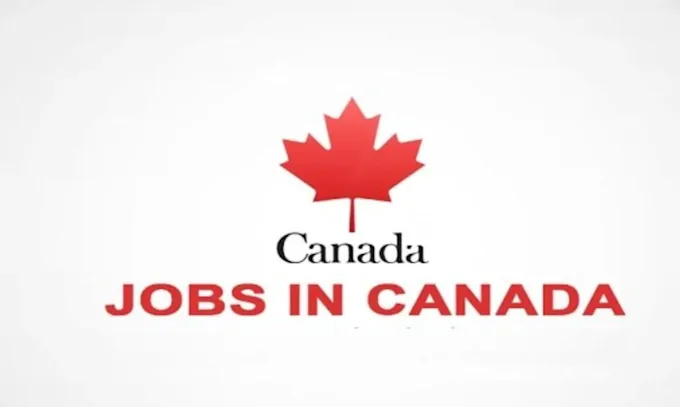Canada’s immigration scene has undergone significant changes in 2025, with major updates to Express Entry categories announced on February 27, 2025. Despite economic headwinds, skilled workers in specific sectors continue to find exceptional opportunities for permanent residency through targeted immigration pathways.
For those seeking opportunities, understanding the available Jobs for Canada Permanent Residency is crucial.
We’ll reveal the most in-demand occupations for Canadian permanent residency in 2025, backed by the latest government data and immigration statistics.
These in-demand Jobs for Canada Permanent Residency can significantly enhance your chances of successful immigration.
Executive Summary: Canada’s 2025 Immigration Priorities
Canada’s job market presents strategic opportunities for skilled immigrants, particularly in healthcare and skilled trades. Job vacancies decreased to 524,300 in Q1 2025, bringing openings closer to pre-pandemic norms, yet critical sectors continue experiencing acute shortages.
The current landscape for Jobs for Canada Permanent Residency reflects a strong demand for skilled professionals.
Key highlights for 2025:
- Healthcare remains #1 priority with 4,000 Express Entry invitations issued on July 22, 2025
- Jobs for Canada Permanent Residency are being prioritized in these draws.
- New Education category introduced with 5 eligible occupations
- Transport category removed from category-based draws
- Spousal work permits restricted to high-skilled occupations only
Understanding Express Entry Category-Based Draws in 2025
Express Entry’s category-based selection system prioritizes candidates with experience in Canada’s most needed occupations. The 2025 overhaul includes expansion of Healthcare to include social services, streamlining of Agri-Food to one NOC code, and major expansion of the Trades category.
Understanding the top Jobs for Canada Permanent Residency helps align your skills with market needs.
Benefits of Category-Based Draws:
- Lower CRS score requirements: Healthcare draws in 2024 ranged from 422-463 CRS, compared to 524-549 for general draws
- Targeted selection based on labour market needs
- Faster processing for priority occupations
- Higher invitation volumes in critical sectors
2025 Express Entry Categories:
| Category | Status | Key Changes |
|---|---|---|
| Healthcare & Social Services | ✅ Expanded | Added social workers, expanded scope |
| STEM Professions | ✅ Active | Maintained with tech focus |
| Trades | ✅ Major Expansion | Added construction, resource extraction, skilled mechanical trades |
| Agriculture & Agri-Food | ✅ Streamlined | Reduced to single NOC code |
| Education | 🆕 New | 5 eligible teaching occupations |
| Transport | ❌ Removed | No longer eligible for category draws |
Top 10 In-Demand Jobs for Canada Permanent Residency 2025
These are the key Jobs for Canada Permanent Residency that you should consider.
Based on Express Entry draws, labour market data, and federal immigration priorities, here are the most promising occupations:
1. Registered Nurses and Registered Psychiatric Nurses
NOC Code: 31301 | TEER Level: 1 | SOWP Eligible: ✅
Registered nursing remains Canada’s most in-demand healthcare profession, with consistent Express Entry draws and universal demand across provinces.
Why It’s No.1:
- Featured in every healthcare-focused Express Entry draw
- Critical shortages in all provinces
- Excellent Provincial Nominee Program (PNP) opportunities
- Strong salary prospects ($70,000-$95,000 annually)
Key Requirements:
Meeting qualifications for the Jobs for Canada Permanent Residency is essential for a successful application.
- Bachelor’s degree in nursing
- Provincial nursing license
- Language proficiency (CLB 7+ recommended)
- Canadian work experience (preferred but not mandatory)
2. Software Engineers and Developers
NOC Codes: 21211, 21231 | TEER Level: 1 | SOWP Eligible: ✅
Technology professionals continue dominating STEM category draws, with consistent high invitation volumes and excellent career prospects.
Market Demand:
- Regular STEM category draws with 1,000+ invitations
- High starting salaries ($80,000-$120,000)
- Remote work opportunities
- Strong tech ecosystem in Toronto, Vancouver, Montreal
3. Electricians (Industrial and Residential)
NOC Codes: 72200, 72201 | TEER Level: 2 | SOWP Eligible: ✅
The expanded Trades category emphasizes construction and skilled mechanical trades, making electricians highly valuable for both Express Entry and spousal work permits.
Growth Drivers:
- Infrastructure development projects
- Green energy transition
- Housing construction boom
- $65,000-$85,000 average salary
4. Licensed Practical Nurses
NOC Code: 32101 | TEER Level: 2 | SOWP Eligible: ✅
LPNs offer an accessible entry point into Canadian healthcare, with lower educational requirements than RNs but strong immigration pathways.
Advantages:
- Faster qualification process
- High demand in long-term care
- SOWP eligibility for spouses
- Clear pathway to RN certification
5. Carpenters
NOC Code: 72310 | TEER Level: 2 | SOWP Eligible: ✅
Canada’s housing crisis has created unprecedented demand for skilled carpenters, supported by federal construction worker admission targets.
Market Outlook:
- Housing shortage driving demand
- Infrastructure projects nationwide
- Apprenticeship opportunities available
- $55,000-$75,000 salary range
6. Medical Laboratory Technologists
NOC Code: 32120 | TEER Level: 2 | SOWP Eligible: ✅
Essential for healthcare diagnostics, MLTs enjoy consistent Express Entry invitations and strong job security.
Career Benefits:
Many of these roles present excellent Jobs for Canada Permanent Residency options.
- Growing demand in all provinces
- Hospital and private lab opportunities
- Stable healthcare sector employment
- Professional growth potential
7. Elementary and Secondary School Teachers
There are various opportunities available in the Jobs for Canada Permanent Residency list.
NOC Codes: 41221, 41222 | TEER Level: 1 | SOWP Eligible: ✅
The new Education category introduced in 2025 includes five teaching occupations, reflecting Canada’s educational workforce needs.
New Opportunities:
- Dedicated Express Entry category
- Provincial teacher shortages
- French-language teachers especially valuable
- Professional development support
8. Social Workers
NOC Code: 41300 | TEER Level: 1 | SOWP Eligible: ✅
Now included in the expanded Healthcare and Social Services category, social workers address Canada’s growing mental health and community support needs.
Demand Drivers:
- Mental health awareness
- Aging population support
- Indigenous community services
- $55,000-$75,000 salary range
9. Plumbers
NOC Code: 72300 | TEER Level: 2 | SOWP Eligible: ✅
Essential trades professionals benefiting from construction boom and infrastructure investments.
Growth Factors:
- New construction projects
- Infrastructure upgrades
- Green building technologies
- Excellent job security
10. Pharmacists
NOC Code: 31120 | TEER Level: 1 | SOWP Eligible: ✅
Healthcare professionals with expanding roles in patient care and community health services.
Career Prospects:
- Clinical pharmacy growth
- Community health expansion
- Aging population needs
- $90,000-$110,000 salary potential
Provincial Job Market Analysis 2025
Understanding the demand for Jobs for Canada Permanent Residency can enhance your immigration strategy.
Understanding provincial labour markets helps target your immigration strategy effectively:
Highest Job Vacancy Rates by Province:
| Province | Vacancy Rate | Top Sectors | Immigration Priority |
|---|---|---|---|
| Manitoba | 3.3% | Healthcare, Trades | High – Active PNP draws |
| Saskatchewan | 3.3% | Healthcare, Agriculture | High – Rural opportunities |
| British Columbia | 3.1% | Tech, Trades, Healthcare | Very High – Large job market |
| Quebec | 3.1% | Healthcare, French services | Moderate – Language requirements |
| Alberta | 2.9% | Energy, Healthcare | Moderate – Economic recovery |
| Ontario | 2.5% | Tech, Healthcare, Finance | High – Largest job market |
Source: Statistics Canada Job Vacancy Survey, Q1 2025
Spousal Open Work Permit (SOWP) Opportunities 2025
Many applicants are seeking Jobs for Canada Permanent Residency through these pathways.
Significant restrictions took effect January 21, 2025, limiting SOWP eligibility to TEER 0-1 occupations and select TEER 2-3 positions.
SOWP-Eligible Occupations by Category:
Healthcare (TEER 2-3):
| Occupation | NOC Code | TEER | Demand Level |
|---|---|---|---|
| Licensed Practical Nurses | 32101 | 2 | Very High |
| Medical Laboratory Technologists | 32120 | 2 | High |
| Pharmacy Technicians | 32124 | 2 | Moderate |
| Nurse Aides and Orderlies | 33102 | 3 | Very High |
| Medical Laboratory Assistants | 33101 | 3 | Moderate |
Construction and Trades (TEER 2-3):
| Occupation | NOC Code | TEER | Demand Level |
|---|---|---|---|
| Carpenters | 72310 | 2 | Very High |
| Electricians | 72200/72201 | 2 | Very High |
| Plumbers | 72300 | 2 | High |
| Construction Supervisors | 72010-72014 | 2 | High |
| Heavy Equipment Operators | 73400 | 3 | Moderate |
Important: New restrictions require the principal applicant to have at least 16 months remaining on their work permit.
Express Entry Draw Trends and Statistics 2025
Healthcare Category Performance:
- Total Draws: 3 (as of July 2025)
- Invitations Issued: 9,000+
- CRS Score Range: 422-474
- Average Score: 448
Trades Category Performance:
- Total Draws: 2 (as of July 2025)
- Invitations Issued: 3,500+
- CRS Score Range: 388-395
- Growth: +19 new occupations added
STEM Category Performance:
- Total Draws: 4 (as of July 2025)
- Invitations Issued: 7,200+
- CRS Score Range: 491-524
- Focus: Software development, engineering
Step-by-Step Immigration Strategy for 2025
Identifying potential Jobs for Canada Permanent Residency is a critical first step.
Phase 1: Skills Assessment and Targeting
- Identify Your NOC Code: Use the NOC website to match your experience
- Check Category Eligibility: Verify inclusion in 2025 Express Entry categories
- Assess SOWP Potential: If married, check spouse’s SOWP eligibility
Phase 2: Documentation and Credentials
- Educational Credential Assessment (ECA): Through WES or equivalent
- Language Testing: IELTS, CELPIP, or TEF for French
- Work Experience Documentation: Detailed reference letters
- Professional Licensing: Research provincial requirements
Phase 3: Express Entry Optimization
- Create Express Entry Profile: Submit accurate, complete information
- Enhance CRS Score: Consider Canadian experience, additional languages
- Provincial Nomination: Apply to relevant PNPs
- Monitor Draw Trends: Stay updated on category-specific invitations
Phase 4: Application and Landing
- Prepare Supporting Documents: Ready for 60-day submission deadline
- Medical Exams and Security Checks: Complete promptly
- Plan Your Landing: Research settlement services and job markets
Provincial Nominee Program (PNP) Opportunities
The PNPs focus on filling Jobs for Canada Permanent Residency that are in high demand.
Many provinces actively recruit workers in high-demand occupations through dedicated streams:
Top PNP Programs for In-Demand Jobs:
| Province | Program | Target Occupations | Processing Time |
|---|---|---|---|
| Ontario | Human Capital Priorities | Tech, Healthcare | 30-60 days |
| British Columbia | Skilled Worker | Healthcare, Trades, Tech | 60-90 days |
| Manitoba | Skilled Workers Overseas | Healthcare, Trades | 45-75 days |
| Saskatchewan | Occupation In-Demand | Healthcare, Trades | 45-90 days |
| Alberta | Accelerated Tech Pathway | Tech professionals | 30-45 days |
Salary Expectations and Career Growth
Many skilled professionals are aiming for Jobs for Canada Permanent Residency due to favorable conditions.
Average Salaries by Occupation (2025):
| Occupation | Entry Level | Mid-Career | Senior Level |
|---|---|---|---|
| Registered Nurses | $65,000 | $80,000 | $95,000+ |
| Software Engineers | $75,000 | $100,000 | $130,000+ |
| Electricians | $55,000 | $70,000 | $85,000+ |
| Licensed Practical Nurses | $45,000 | $55,000 | $65,000+ |
| Carpenters | $45,000 | $60,000 | $75,000+ |
| Medical Lab Technologists | $50,000 | $65,000 | $80,000+ |
| Teachers | $45,000 | $65,000 | $85,000+ |
| Social Workers | $50,000 | $65,000 | $80,000+ |
| Plumbers | $50,000 | $65,000 | $80,000+ |
| Pharmacists | $80,000 | $100,000 | $120,000+ |
Salaries vary by province, experience, and specialization
Cost Analysis: Immigration Investment
Be sure to budget for costs related to obtaining Jobs for Canada Permanent Residency.
Typical Immigration Costs:
| Expense Category | Cost Range (CAD) | Notes |
|---|---|---|
| Express Entry Fees | $1,365-$2,140 | Varies by family size |
| Language Testing | $300-$400 | IELTS/CELPIP |
| Educational Assessment | $200-$300 | WES or equivalent |
| Medical Exams | $300-$500 per person | Required for PR |
| Professional Assessment | $500-$2,000 | Varies by profession |
| Legal/Consultant Fees | $2,000-$5,000 | Optional but recommended |
| Settlement Funds | $13,310-$25,690 | Family size dependent |
| Total Estimated Cost | $18,000-$36,000 | For family of 2-4 |
Common Mistakes to Avoid
Avoid common pitfalls associated with seeking Jobs for Canada Permanent Residency.
Documentation Errors:
- Incorrect NOC Code Selection: Can lead to application refusal
- Insufficient Work Experience Proof: Detailed reference letters required
- Language Score Validity: Ensure tests remain valid throughout process
Strategic Mistakes:
- Ignoring Provincial Requirements: Research licensing and certification needs
- Poor Settlement Planning: Consider cost of living and job market realities
- Incomplete Express Entry Profile: Missing information reduces competitiveness
Expert Tips for Immigration Success
1. Maximize Your CRS Score
- Language Proficiency: Aim for CLB 9+ in all areas
- Canadian Experience: Even 1 year significantly boosts scores
- Additional Languages: French proficiency adds substantial points
- Education: Consider additional credentials if beneficial
2. Strategic Application Timing
- Monitor Draw Patterns: Category-based draws occur regularly
- Prepare Documentation Early: Have all documents ready before receiving ITA
- Consider Multiple Pathways: Apply to relevant PNPs simultaneously
3. Professional Development
- Upgrade Skills: Stay current with industry certifications
- Network Building: Connect with Canadian professionals in your field
- Settlement Research: Understand workplace culture and expectations
Future Outlook: Immigration Trends Beyond 2025
Future trends suggest increasing availability of Jobs for Canada Permanent Residency.
Canada’s immigration system continues evolving to meet labour market needs:
Expected Developments:
- Increased Healthcare Focus: Aging population drives continued demand
- Skills-Based Selection: Greater emphasis on specific competencies
- Regional Distribution: Programs encouraging settlement outside major cities
- Technology Integration: Streamlined application processes and digital credentials
Long-Term Opportunities:
- Green Economy Jobs: Environmental and renewable energy sectors
- Digital Health: Telemedicine and health technology roles
- Advanced Manufacturing: Industry 4.0 and automation specialists
- Care Economy: Elder care and disability support services
Frequently Asked Questions
Q: Can I apply for Express Entry without a job offer? A: Yes, most Express Entry programs don’t require job offers, though having one increases your CRS score significantly.
Q: How long does the Express Entry process take? A: 6-8 months from receiving an ITA to landing, assuming all documents are ready.
Q: Is French proficiency really necessary? A: Not mandatory, but French skills dramatically improve your chances, especially for lower CRS scores.
Q: Can my spouse work immediately upon landing? A: With a SOWP, your spouse can work before you receive PR. After landing, both spouses have full work authorization.
Q: What if my occupation isn’t on the in-demand list? A: You can still apply through general Express Entry draws or explore PNP programs with broader occupation lists.
Conclusion: Your Path to Canadian Permanent Residency
Evaluating your options for Jobs for Canada Permanent Residency is crucial for a successful transition.
Canada’s 2025 immigration landscape offers exceptional opportunities for skilled workers in healthcare, trades, and technology sectors. The introduction of category-based draws has democratized the Express Entry system, making permanent residency more accessible for candidates with in-demand skills.
Success requires strategic planning, proper documentation, and understanding of both federal and provincial priorities. Whether you’re a healthcare professional, skilled tradesperson, or technology expert, Canada’s commitment to welcoming 395,000 new permanent residents in 2025 creates unprecedented opportunities.
The key to success lies in aligning your skills with Canada’s priorities, optimizing your Express Entry profile, and preparing thoroughly for the application process. With the right approach, 2025 could be the year you achieve your Canadian immigration goals.





